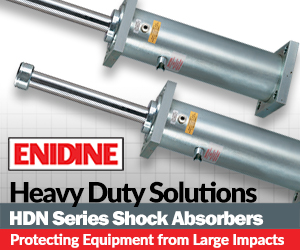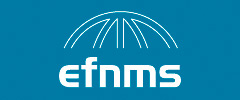Digitalisation Redefines Plant Management and Monitoring
Assessment of plants by combining periodic inspections with continuous and permanent monitoring and the use of suitable algorithms can help to make the most of existing tolerance ranges in operation.
Alongside artificial intelligence (AI) and machine learning (ML), the Industrial Internet of Things (IIoT) is paving the way not only for near-autonomous chemical, power or manufacturing plants of the future, but also for increased operational safety, higher plant availability and significantly reduced total cost of ownership (TCO).
Plant operators face enormous challenges related to ageing infrastructures and increasingly ambitious requirements for optimum production performance. These challenges are compounded by the ageing of industrial assets and the lack of qualified and trained personnel for operational control management. Today’s industrial asset integrity management (AIM) and process safety management (PSM) are characterised by periodic inspections and assessments with intervals often determined by international standards, regulatory frameworks and applicable manufacturing guidelines. Yet these inspections only provide information about the condition of the asset at a specific point in time, failing to consider the impacts of continuous production processes on asset integrity.
The results are highly conservative estimates of the remaining lifetime, as asset condition and performance are frequently calculated and predicted on the basis of data that are years old and fail to sufficiently consider the dynamics of ongoing operations. The problem is that in industrial production, AIM and PSM are constantly influenced by various intrinsic and extrinsic events, which remain unaddressed in current strategies.
Making the invisible visible: IIoT sensors as game changers
Common technical standards (ASME, BetrSichV, etc.) fail to sufficiently reflect the numerous intrinsic and extrinsic influences and interactions to which assets are continuously exposed during production processes. While difficult to predict, complex degradation mechanisms and safety parameters impact on overall integrity and process safety, potentially resulting in unexpected failures or machine faults which may cause plants to shut down immediately. Potential sources of failures may remain undetected leading to incidents that may cause injuries to engineers and technicians or environmental pollution.
The IIoT also opens new horizons for process safety management in the form of digitalisation of risk management using sensor data and a database for strategies such as PHA, HAZOP and LOPA and algorithms for SIL/SIF computation. Properly designed and permanently installed IIoT systems provide more information about previously invisible connections and dependencies between plant performance and various integrity and process safety events. This allows machine learning to use data collected from different sources to identify predictable adverse incidents in advance. Proper analysis of connected data turns them into useful information for reliable, real-time decisions and represents a step towards optimised, more resilient and more efficient management of asset integrity and process safety.
This development will soon be complemented by artificial intelligence, which uses self-learning algorithms and expert information, e.g. from TÜV SÜD databases, to recommend appropriate solutions for specific issues. At this stage, decision-making will no longer be based exclusively on rigid historical data, but also take into account the actual condition of the plant.
Ultrasonic corrosion monitoring
Pressure bearing components, especially those that transport hazardous chemical substances, are subject to various types of degradation over time, such as corrosion. These degradation mechanisms pose both economic and technical challenges. Worldwide, the costs of corrosion alone amount to more than 2.8 trillion US dollars per year. From a technological perspective, degradation refers to the gradual weakening of the material at varying degrees of severity. Permanently installed IIoT ultrasonic sensors can seamlessly monitor component condition, thereby enabling continuous asset health monitoring (AHM).
One recommended approach is risk-based inspection (RBI). RBI identifies likely degradation mechanisms and failures as well as their consequences for production, the environment, and the investment. The RBI experts draw up precise positioning recommendations for the ultrasonic IIoT sensors. In the next step various types of sensors with different configurations are affixed to highly critical locations (locations that involve a high failure probability or severe failure consequences). The sensors gather data on wall thickness and crack/material behaviour over time. TÜV SÜD and the Technical University of Dresden are currently working on the development of special thin-film ultrasonic sensors which will soon offer the opportunity to cover entire object surfaces with permanent IIoT sensing. These sensors thus offer unprecedented ultrasonic capabilities, measuring not only wall thickness, but also extrinsic parameters that affect the progression of anomalies, such as temperature, pressure, and humidity.
The collected data are automatically uploaded to the cloud and analysed in real time. They include corrosion and crack growth rates, dynamic fitness-for-service assessment, and the remaining lifetime. If defined thresholds are reached or exceeded, operators are alerted by email. TÜV SÜD’s AHM solutions provide continuous monitoring and informative data on the behaviour of critical assets over a period of more than 5 years. Authorised personnel can access the relevant information on a digital dashboard.
Acoustic emission testing
Scanning the entire surface and volume of a critical industrial asset, such as a pressure vessel or storage tank, is not always cost-effective. Acoustic emission testing (AET) can identify exactly where an asset is affected by ongoing and active degradation, without having to scan the entire asset. AET is typically done by placing a set of sensors on the asset wall for a few hours to measure the acoustic waves caused by ongoing and active mechanical stresses, for instance formation and growth of cracks, deformation slip bands, or recrystallisation effects related to twinning and phase transformations. Using triangulation, experts can precisely locate the origin. Cumulation further increases accuracy. Pinpointing developing anomalies such as cracks with reliability is crucial for the overall integrity of the plant. Specialists can target and analyse events at these locations and make appropriate recommendations. This fosters mechanical integrity and the efficient use of economic resources.
Intelligent algorithms for power plants
If conventional power plants were able to handle rapid changes between peak and minimum loads, it would be possible to integrate more wind and solar energy into the power grid. However, existing plants are not designed for frequent changes in thermal loads; the accompanying severe temperature fluctuations expose materials to thermal stresses, which can lead to creep damage and thermal fatigue in steam generators and pipelines. Given this, plant operators frequently engage in precise and permanent tracking of parameters such as temperature and pressure to monitor component fatigue.
TÜV SÜD physicists and engineers developed an analytical software called TSE “Temperature-Stress-Exhaustion”. Using the collected data e.g. continuous temperature and pressure data the TSE software provides a realistic calculation of component condition under consideration of the applicable standards and regulations, thereby extending the tolerance range and ensuring more flexibility for operationally required thermal loads. The assessment also provides valuable input for the optimisation of condition-based maintenance and the potential extension of inspection intervals.
Taking the example of a nozzle, Fig. 1 shows how rapid temperature changes in the fluid and the associated temperature distribution in the component result in the formation of mechanical stresses. These, in turn, cause material fatigue, as can be seen in Fig.2. TSE determines the current state of exhaustion and evaluates the loads that have occurred in operation so far. Fig.3 illustrates the advantage of determining exhaustion as precisely as possible. Using the remaining service life of the component calculated in this manner and what-if analyses, the experts can control the future development of exhaustion.
On the way to autonomous plants
The IIoT and AI are paving the way for automated assets and are ushering in a fundamental transformation of industrial asset management. TÜV SÜD works with major industrial operators to complement periodic inspections with continuous monitoring using IIoT sensors and enable long-term economic asset management with artificial intelligence. Emerging AI applications are beginning to be able to interpret and recognise complex dependencies. TÜV SÜD’s AI application is currently still in the final stages of development. Plant operators will soon benefit from AI that uses not only patterning, trending and reasoning, but also the knowledge that TÜV SÜD engineers have accumulated over the years. Machine-learning algorithms are already supporting plant operators with AIM and PSM information in real time. As AI and ML progress, the information obtained will also be constantly refined.
Continuous data acquisition and analysis and permanent monitoring of plant behaviour will characterise the AIM and PSM assessments of tomorrow. Supplemented by digital twins and meaningful analysis of big data, plant availability and plant safety will increase while total cost of ownership will decrease.
Mastering Digitalisation
Throughout the digitalisation process, various risks and challenges need to be anticipated, mitigated and mastered. In addition, the requirements of regulatory frameworks must be met. Drawing on over 150 years of experience in industrial services, plant managers and operators around the globe trust TÜV SÜD when it comes to digitalising their AIM and PSM processes. The experts provide support with goal identification and scope definition and help operators to equip their facilities with IIoT sensors, dashboards and AI modules including machine learning. Remote and digital robotic inspections and digital twins of assets round off the Industry 4.0 services offered by TÜV SÜD.
Dr César Buque, TÜV SÜD AG
Photos: TÜV SÜD, SHUTTERSTOCK









![116716-AMS-Machine-Works-digital-banner_300x600_MaintWorld_EN[52] 116716-AMS-Machine-Works-digital-banner_300x600_MaintWorld_EN[52]](/var/ezwebin_site/storage/images/media/images/116716-ams-machine-works-digital-banner_300x600_maintworld_en-52/78645-1-eng-GB/116716-AMS-Machine-Works-digital-banner_300x600_MaintWorld_EN-52.png)



